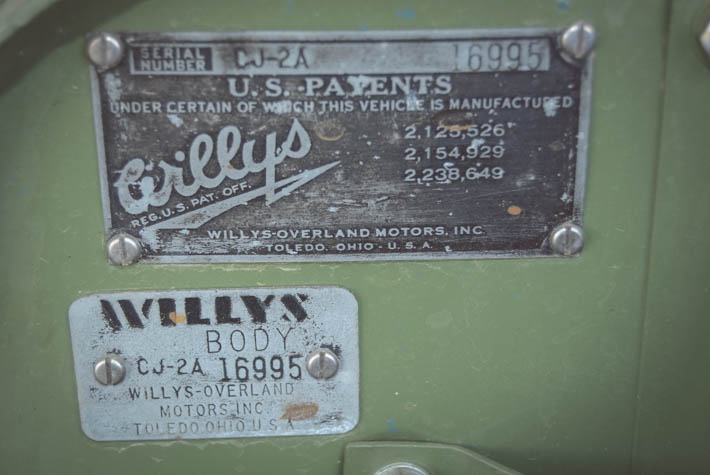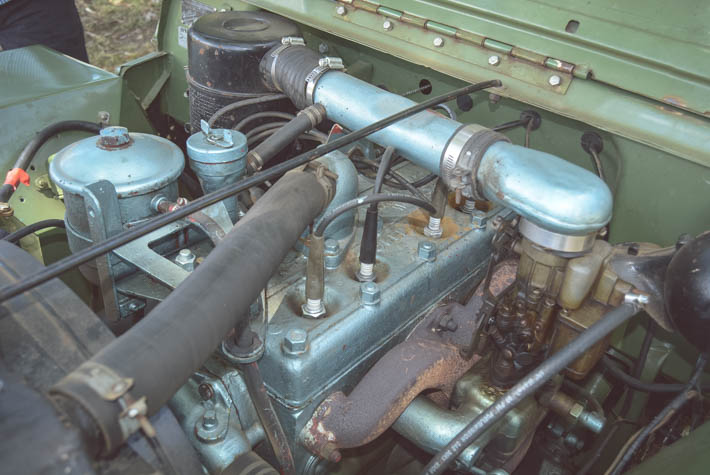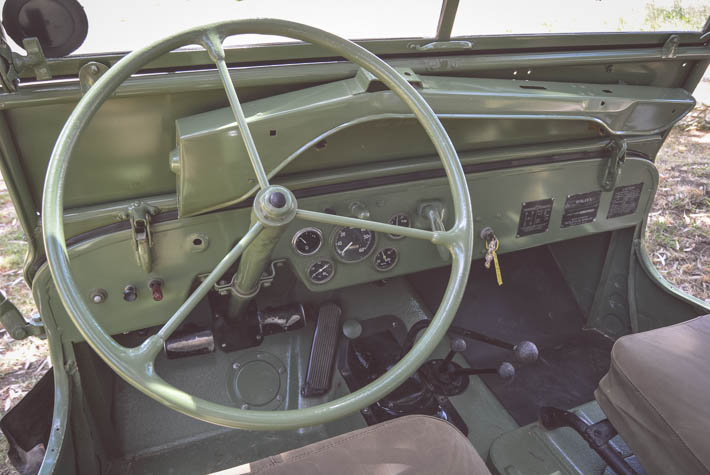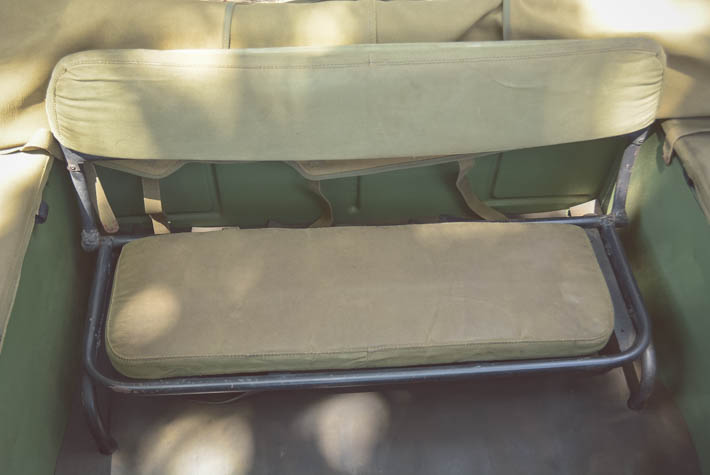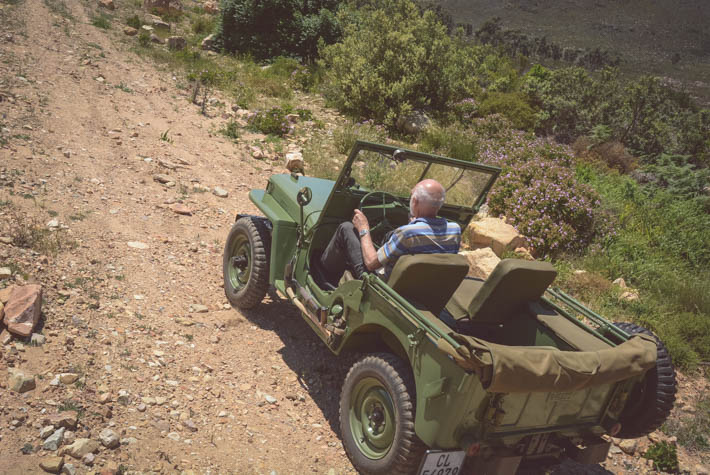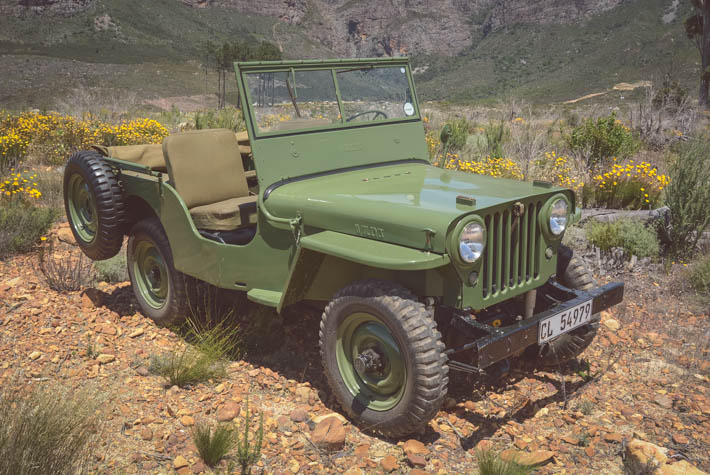
20 Oct Collection In Action – J
An alphabetical series of short driving impressions of some of the museum’s car collection. This month we go off the beaten track in a classic Jeep CJ.
Although America joined WWII late on in the proceedings, one of its most telling contributions to the war effort was the concept, development, introduction and use of the General Purpose vehicle – or as it was commonly believed to have been phonetically pronounced, the Jeep. Created in 1940 in answer to an American Defence Department call for a military workhorse, the Jeep was effectively an amalgam of ideas from three manufacturers, namely Bantam (general design of the vehicle), Ford (front-end layout) and Willys-Overland (powertrain). The use and success of the Jeep MB in military operations around the world is the stuff of legends, and it was perhaps inevitable that once hostilities ceased, its application into other fields – literally and figuratively – would follow. And so, after a short re-engineering programme that saw the introduction of a tailgate, drawbar and canvas hood, Willys-Overland introduced the CJ-1 – Civilian Jeep-1 – to the peacetime world.
It is reported that none of the CJ-1s built have survived, and it is not known how many were built, but its production life was less than a year before the CJ-2 appeared, although this was not really available at retail. Fitted with PTOs (Power Take-Off), the CJ-2s were also known as the AgriJeep and were essentially test units distributed to ‘agricultural stations’ for evaluation purposes, and just 45 were built.
The lessons learned with this exercise led to the development of the first full-production CJ, the CJ-2A, introduced in 1945, which was basically a civilianized MB with a tailgate, a side-mounted spare tyre and the fuel filler relocated to the outside of the body. Oh, and a seven-slat grille incorporating flush-mounted headlamps (nowadays a trademark design of the Jeep brand) in place of the MB’s nine-slat grille with smaller, recessed headlamps. The engine continued to be the Willys L-134 2,2-litre Go-Devil L-head in-line four that developed 45 kW at 4 000 r/min and 142 N.m of torque at 2 000, but it was mated with a beefier Borg-Warner three-speed gearbox. A single carburettor was used and the compression ratio was a mere 6,48:1.
Since the CJ-2A was primarily intended for farming, ranching and industrial applications, its basic configuration was just that – basic. A wide variety of extras was available including a passenger seat, (tiny) rear seat, front and rear PTOs, centre rear-view mirror, canvas top, capstan winch, heavy-duty springs, dual vacuum windshield wipers, dual tail-lamps and a hot-climate radiator. A bright range of body colour/road wheel combinations was also available.
Frequent post-war strikes hampered the early production of CJ-2As but a total of 214 760 were produced up to 1949 when it was replaced by the CJ-3A. FMM’s CJ-2A has body number 16995, which suggests it was made in 1946 and was acquired complete with spade, axe and most of the ‘extras’ mentioned above and it appears as though it was one of a number of CJs imported to SA aimed at the agricultural sector. As for the colour scheme, Pasture Green is the likely hue but without the ex-factory Autumn Yellow wheels.
The starter is a button high up on the floorboard (not to be confused with the headlamp dip switch, and once the ignition is switched on it is possible to ‘heel and toe’ the starter and accelerator to bring the heavy, all-iron motor into life. The driving position is non-negotiable: the green vinyl-covered seat cushions are uncompromisingly thin (a numb posterior is inevitable) and the thin-rimmed steering wheel offers about as much directional control as rudderless dingy in a storm. With a short, 80-inch wheelbase (2 032 mm), the ride puts a new meaning on the description ‘communicative’ – every nuance of the ground beneath is felt. But get off the beaten track and this CJ takes on a ‘to infinity and beyond’ persona that, ahem, gives you a real buzz…
With the option of locked differentials and a high/low range transfer case, the Willys will go up, around or over practically anything in its path from a slow walking pace upwards. Rugged and virtually indestructible, ‘The Sun Never Sets on the Mighty Jeep’ was one of Willys’ marketing slogans. Variations on the CJ theme lasted until 1986, a remarkable legacy of a pioneering off-roader.
